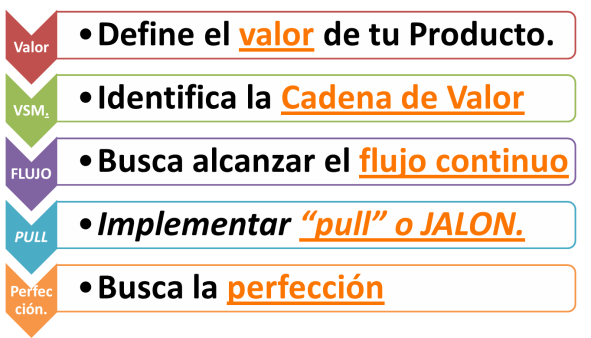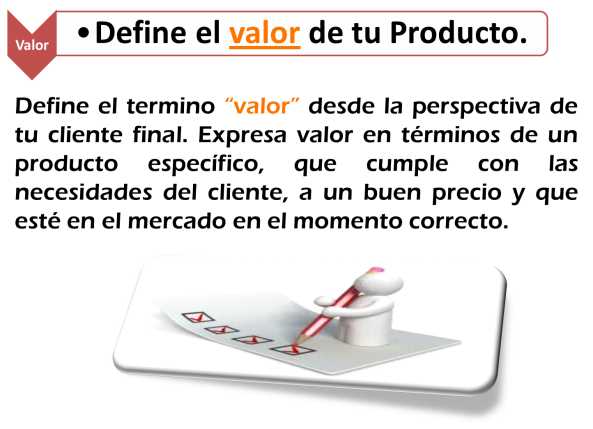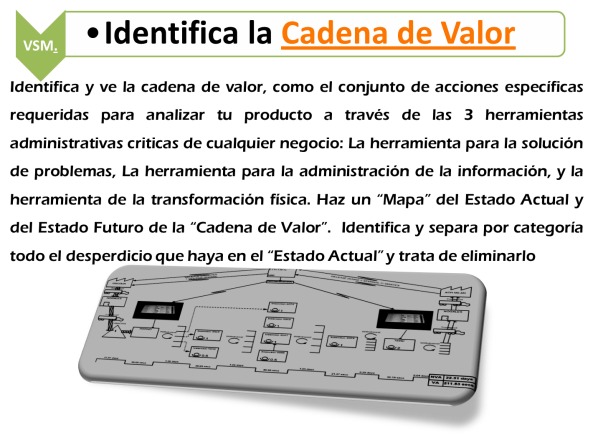Este documento me pareció muy bueno, por lo cual lo he copiado en mi bog para aquellos que gustan de las teorías de W. E. Deming.
W. Edwards Deming’s 14 points are the basis for transformation of industry. Adoption and action on the 14 points are a signal that the management intend to stay in business. aim to protect investors and jobs. Such a system formed the basis for lessons for top management in Japan in 1950 and in subsequent years.
The 14 points apply anywhere, to small organisations as well as to large ones, to the service industry as well as to manufacturing. They equally apply to any division within a company and to it’s suppliers.
As you read through each of the 14 points below, ask yourself if they still apply today, either within your current organisation, or within organisations you have recently worked for. The answers may be surprising.
1. Constancy of purpose:
Create constancy of purpose toward continual improvement of product and service, with a plan to become competitive and to stay in business.

Management have two concerns. One deals with running the business on a day to day basis. The other deals with the future of the business.
They must have clarity on the questions; what are we doing, and why are we doing it?
The answer to these questions requires knowledge and looking to the future. It is the difference between short term and long term thinking; the tortoise and the hare.
Problems of the future require constancy of purpose, and dedication to improvement.
Create constancy of purpose toward continual improvement of products and service, allocating resources to provide for long range needs, rather than only short term profitability, with the aim to become competitive, stay in business and to provide jobs.
To stay in business requires that leaders spend time on innovation, research and education. They must constantly improve the design of their product and service.
Purpose is an intent, a goal, a vision of some future desired state. To have constancy of purpose then one must first have a purpose.
2. The new philosophy:
We are in a new economic age, created in Japan. Management must awaken to the challenge, must learn their responsibilities, and take on leadership for change.

Improvement never stops. The system is capricious, erratic, it will affect people in different ways from one month to another. Which is why you need continuous improvement, it can never finish as change never finishes.
The customer demands and tastes change very fast, and the competition in the market grows at a rapid rate today.
Henry Ward Beecher said “Philosophy of one century is the common sense of the next”; we have to accept new philosophies according to the market trends and technology revolutions.
Learn and adopt the new philosophy, one of cooperation to everyone’s benefit.
Management must awaken to the challenge, learn their responsibilities and take on leadership for change.
We are in a new economic age, created in Japan. We can no longer live with commonly accepted levels of delays, mistakes, defective materials and defective workmanship. We cannot accept today, the levels of error that could be tolerated yesterday. Defective products and services are a cost to the system.
Only management is in a position to do something about the vast majority of errors. Transformation of Western management style is necessary to halt the continued decline of business and industry.
Its management’s task to remove the obstacles that prevent people from doing their jobs correctly.
3. Cease dependence on mass inspection:
Eliminate the dependence on inspection to achieve quality. Eliminate the need for inspection on a mass basis by building quality into the product in the first place.

You can not save money if you are more worried about money, than you are about quality.
Cease dependence on mass inspection to achieve quality. Mass inspection is not reliable. Inspection sound right, but it is wrong.
You can’t inspect quality in, yet we have organisations using ISO and audits as a means to prove quality.
Routine inspection is the same as planning for defects, acknowledging that the process isn’t correct, or that the specifications made no sense in the first place. Inspection is too late as well as ineffective and costly.
Instead require statistical evidence that quality is built in.
Quality doesnt come from inspection, but from improvement of the process. Improve the process so that defects aren’t produced in the first place. This eliminates the need for inspection on a mass basis.
Eliminate the need for mass inspections, as the way of life to achieve quality, by building quality into the product in the first place. Require statistical evidence of quality improvements.
You can not save money if you are more worried about money, than you are about quality.
4. End lowest tender contracts:
End the practice of awarding business on the basis of price tag along. Instead, minimise total cost. Move toward a single supplier for any one item, on a long-term relationship of loyalty and trust.

Without adequate measures of quality, business drifts to the lowest bidder, therefore the result is low quality and high cost.
Price has no meaning without measure of the quality purchased.
End the practice of awarding business on a price tag alone. Instead, require meaningful measures of quality along with price.
Reduce the number of suppliers for the same item, by eliminating those that do not qualify with statistical and other evidence of quality.
The aim is for both parties to work together, by minimising variation to increase quality, and to minimise total cost (not merely initial costs) for both parties.
This may be achieved by moving toward a single supplier for any one item, on a long term relationship of loyalty and trust.
It will lead to continuous improvement between both parties and as a result you will get quality supplies at reduced costs. This is why Japanese manufacturers are so closely aligned to their suppliers.
We often spend lots of time and money to find better suppliers and shift rapidly between them for slight monetary gains. Instead of getting vendors to compete on price think long term. Purchasing managers have a new job and must learn it.
Today many organisations just outsource to the cheapest supplier, and often to multiple suppliers within the same business unit or project.
5. Improve every process:
Improve constantly and forever the system of production and service, to improve quality and productivity, and thus constantly decrease costs.

Constantly improve the production and service system to improve quality and productivity, thus decreasing costs.
Accept nothing is ever good enough. Improve constantly and forever every process for planning, production and service.
Improvement isn’t a project with a finite end. Instead, think continuous, never ending improvement.
Institute innovation.
Everyone should search continually for problems in order to improve every activity in the company, to improve quality and productivity and thus to constantly decrease costs.
Finding what’s wrong is not improvement. Plugging leaks is not improvement. Don’t look at outcomes or defects, instead look at what produces the defects.
There should be continual education on waste and continued improvement of quality in every activity, this will yield a continual rise in productivity.
It is management’s job to work continually on the system (for example work design, incoming work, improvement of tools, supervision, training and retraining). There in no stopping point in the process of quality management.
The enterprise system and services must keep growing indefinitely in order to catch up with the competitive market.
6. Institute training on the job:
Institute modern methods of training on the job.

Provide learning and development. Institute training on the job, training for new skills.
People learn in different ways. Training must be totally reconstructed.
When training, people need to understand what the job is and why it is being done.
Training must be done on the job, learning by doing; going into the work and experimenting with work methods and new ideas, studying the results, and striving for perfection.
A trained worker has more productivity and quality than an untrained one, so giving training sessions will drastically improve the quality of the person, and also directly helps in better performance with regard to product quality.
Institute modern methods of training on the job for all, including management, to make better use of every employee.
New skills are required to keep up with changes in tools, methods, techniques, product and service design.
7. Institute leadership of people:
The aim of management should be to help people to do a better job. Management is in need of overhaul.

Leadership is required notsupervision.
Leadership is in need of overhaul, the job of leaders is to help people.
Adopt and institute leadership aimed at helping people to do a better job.
Adopt and institute principles for leadership improvement.
The emphasis of management must be changed from sheer numbers to quality. Improvement of quality will automatically improve productivity.
Management must ensure that investigation and actions are taken on reports of inherited defects, system conditions, poor tools, fuzzy operational definitions, variation and all conditions detrimental to quality. You can’t delegate quality, its a road to failure.
The basic principle is that it’s the managers job to coach their staff and improve the system
- Firstly, they spend time in the work reinforcing the organisations commitment to its customers and to quality.
- Secondly, they devote time to ensuring the staff doing the work have everything they need to be able to serve the customer.
- Thirdly, when they have a decision to make about either of the above they get data to base their decisions on. There is no knee jerk, instead they get knowledge.
8. Drive out fear:
Drive out fear so that everyone may work effectively for the company.

Extinguish fear so everyone may work effectively for the organisation.
Build trust. Cooperation and collaboration requires a whole different set of values and relationships than that used in the outdated command and control method.
People are afraid of change, any attempt to make things better will lead to a fear of the unknown.
Many organisations are run by fear; fear of not getting their bonus, being afraid that they can’t meet their annual rating, or fear that they will be low on rating ladders.
To achieve better quality people need to feel secure. We need to eliminate fear so that everyone may work effectively for the company. Fear will disappear as management improves and as employees develop confidence in management.
Driving our fear is part of at least 8 of the 14 points.
9. Break down barriers:
Break down barriers between departments. People in research, design, sales, technology and production must work as a team.

Break down barriers and silos between departments. In other words build a system.
Traditionally each silo becomes independent kingdoms, each trying to maximise their own figures.
People in research, design, sales, technology and production must work as a team to be able to foresee any production problems, and potential product or service issues.
Unless staff work jointly in a spirit of co-operation, each area will try to do what is best for itself, rather than whats good for the organisation. It means cooperation not competition, everybody wins if the system wins.
10. Eliminate exhortations:
Eliminate the use of slogans and exhortations for the work force asking for zero defects and new levels of productivity.
- Eliminate work standards (quotas). Substitute leadership.
- Eliminate management by objective. Substitute leadership.
- Eliminate management by numbers, numerical goals. Substitute leadership.
 Eliminate slogans, warnings and targets for the work force asking for zero defects, doing it right first time and new levels of productivity. Such urging only creates hostile relationships.
Eliminate slogans, warnings and targets for the work force asking for zero defects, doing it right first time and new levels of productivity. Such urging only creates hostile relationships.
Posters ask people to do what they can not do.
Posters and slogans on the wall stating “do it right first time”; who can do it right first time, when the stuff someone has to work on is already wrong?
The causes go beyond the power of the work force, as the majority of low quality and low productivity causes result from the system.
If the system has been built around quality, then it will be done right first time, so the slogan will be meaningless.
Ensure you substitute work standards and quotas with effective leadership and effective methods. Substitute management (by objectives, numbers and numerical goals) with effective leadership.
11. Eliminate arbitrary numerical targets:
Eliminate work standards that prescribe quotas for the work force and numerical goals for people in management. The responsibility of managment must be changed from sheer numbers to quality.

Numerical goals accomplish nothing.
Traditionally quantity rules over quality.
The cost of caring more about numbers than you do about quality is enormous, it results in high costs finding and fixing mistakes. That money spent produces nothing.
Focus on quality rather than quantity of product. Remove obstacles depriving workers of their right to take pride in their work. Managers must focus on quality, rather than sheer numbers.
Substitute aids and helpful leadership in order to achieve continual improvement of quality and productivity.
A system of continuous improvement yields greater production at lower costs. The focus is not on how many you make, it is on how well you make them.
12. Permit pride of workmanship:
Remove barriers that rob workers and people in management of their right to having pride in their work. This means, for example, abolishment of the annual or merit rating and of management by objective.
 Remove the obstacles and barriers that deprive workers, and people in management, of their right to take pride and joy in their work. This implies abolition of the annual merit rating (appraisal of performance) and of Management by Objective, all of which creates conflict and competition.
Remove the obstacles and barriers that deprive workers, and people in management, of their right to take pride and joy in their work. This implies abolition of the annual merit rating (appraisal of performance) and of Management by Objective, all of which creates conflict and competition.
These barriers to pride (a basic human need) among other things, results in low morale and absenteeism.
We need people to have pride in their work, not in their ability to meet ratings.
Again, the responsibility of Team Leaders, Managers, Directors and senior leaders must be changed from sheer numbers to quality.
Fixing points for employees, and ranking them inside the company, infuses competition within that organisation. We want collaboration not competition.
Involve employees, at all levels, in the process of improvement. Supply workers with the proper methods, materials and tools. Managers work on the system that is impeding performance.
13. Encourage education:
Institute a vigorous programme of education and self-improvement.

Institute a vigorous program of education and encourage self improvement for everyone.
What an organisation needs is not just good people; it needs people that are improving with education.
Education may not be in a subject that is connected to their work.
Self improvement keeps people’s minds developing. Point 6 is training for the job, point 13 is elevating people’s minds.
Advances in competitive position will have their roots in knowledge. No organisation can survive with just good people, they need people that are improving.
14. Top management commitment and action:
Put everybody in the company to work to accomplish the transformation. The transformation is everybody’s job.
 Put everybody in the organisation to work to accomplish the change.
Put everybody in the organisation to work to accomplish the change.
Develop a critical mass that will bring about the change; a critical mass including top management.
Create a structure in management who take an active part and who spend time in the work reinforcing the 14 points, and the organisation’s commitment to it’s customers and to quality.
Managers should devote time to ensuring the staff doing the work have everything they need to be able to serve the customer. They use data and real knowledge obtained from the customer’s point of view to make decisions.
Without such a structure no viable long-term benefits will be achieved.
Summary
The 14 points are not a menu you can pick and choose from. Deming intended you use all 14. They are one philosophy.
“The way not to depend on mass inspection (point 3) is to continually improve the process (point 5), to do that you will need quality supplies (point 4), finding a quality supplier takes time (point 1), to do so you will need to adopt the philosophy (point 2)” Lloyd Dobbins
“We want our people to work together, but its hard to do so without point 8, 9, 10, 11 and 12.” Lloyd Dobbins
The 14 points apply anywhere, to small organisations as well as to large ones, to the service industry as well as to manufacturing. They equally apply to any division within a company.
“The 14 points all have one aim, make it possible for people to work with joy and pride” Deming
Source: CC-M Productions, Inc. 7755 16th Street, NW Washington, DC 20012 ManagementWisdom.com (800) 453-6280wbob@cc-m.com
Source: Vanguard http://www.systemsthinking.co.uk/home.asp
Source: Vanguard Scotland http://www.systemsthinkingmethod.com/
Source: Illustrations by Pat Oliphant http://www.managementwisdom.com/freilofdem14.htm























